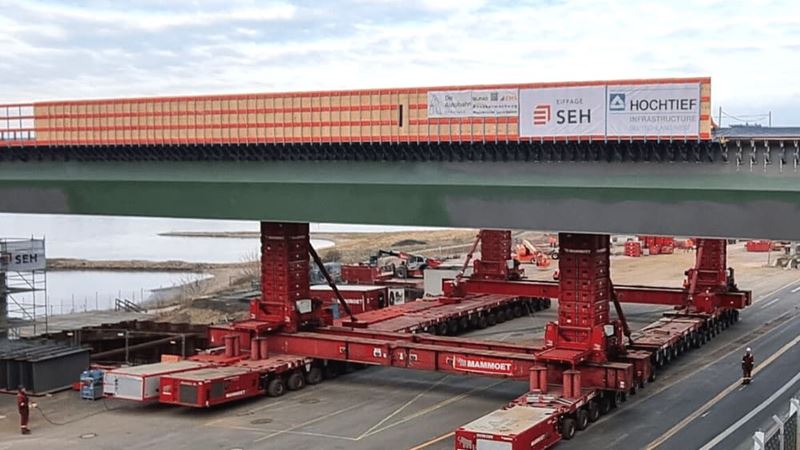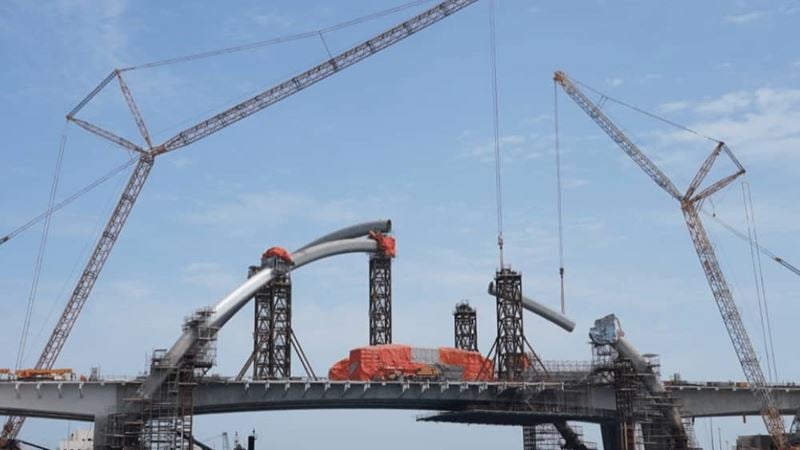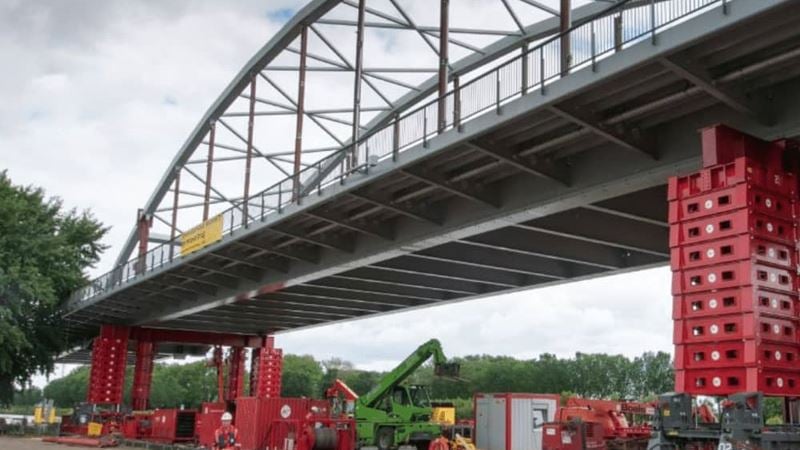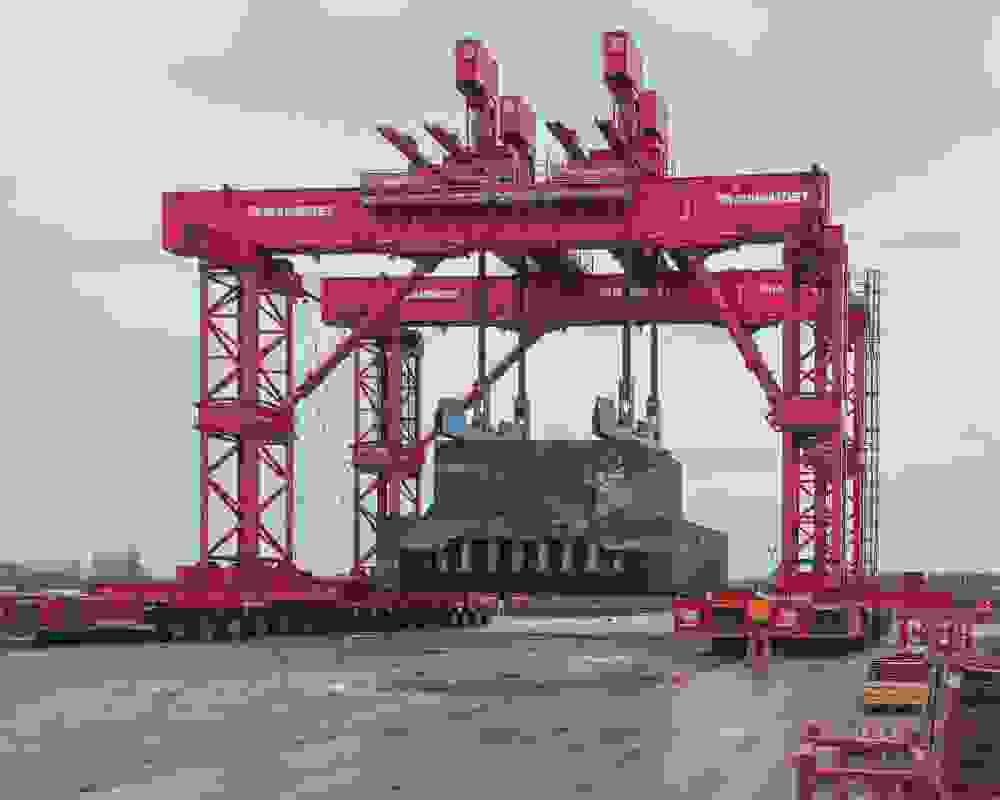
Sector:
Civil Engineering
Expertise:
Heavy lifting
Heavy transport
Gantry lifting
Benefits:
Protected infrastructure
Location:
Netherlands
Relocating historical bunkers takes extreme care and enormous power.
Along the Lek Canal linking Rotterdam to Amsterdam, fortified bunkers and sluices once helped protect The Netherlands from invasion.
So, when it was decided to widen the canal, it was essential these pieces of cultural heritage were preserved. In fact, their UNESCO world heritage status depended on it.
Moving them intact, however, presented significant challenges. First, it was their weight – up to 1600 metric tons. Secondly, an operation like this had never been attempted before. But, following in-depth research and by using a specially designed gantry and tilting system, Mammoet together with contractor ‘Sas van Vreeswijk’ (BESIX, Heijmans, Jan de Nul), successfully relocated these huge objects to their new location for future generations to come.
With only old drawings to refer to, engineers had to work from the first principles to calculate the loads involved. They also had to consider the structural integrity of the ancient bunkers and ensure they could be safely detached from their foundations.
Made of bomb-proof reinforced concrete and weighing up to 1600 tons, the bunkers required a custom-designed, four-column gantry system to lift them. Using cables inserted into specially drilled holes with anchor plates at the bottom, the gantries supported the weight of the bunkers making it safe to cut away the original foundation piles beneath.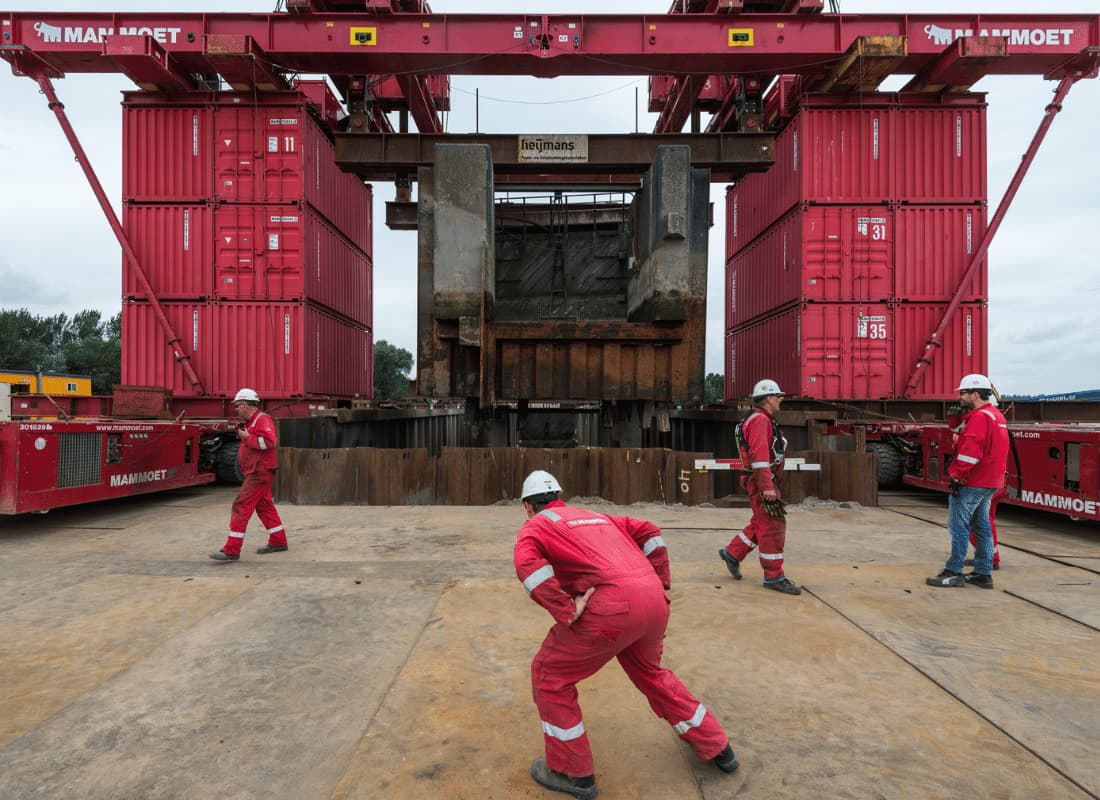
Once free, it was time to move them to their new location. As their destination wasn’t reachable in a straight line, skid beams couldn’t be deployed. So it was necessary to use SPMTs to lift and maneuver the fully loaded gantries into the precise position required.
Given the muddy ground along the canal, a special roadway had to be constructed to support this massive structure. Installing the bunkers at their new location presented further challenges.
To comply with UNESCO requirements, they had to be mounted at an angle to give the feeling of an objet trouvé. This required rotating them to an angle of 15° using a specially designed tilting frame and four-strand jacks with a skidding system. Inch by inch, the bunkers were lowered into their new foundations.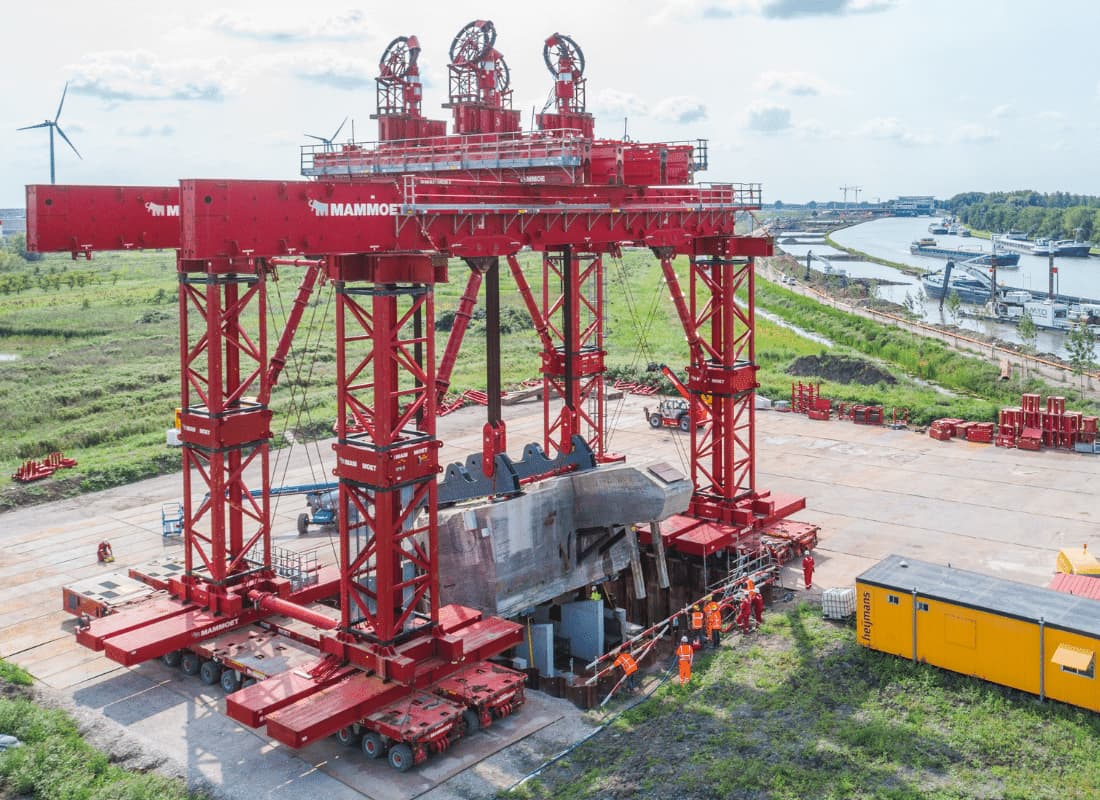
In total, Mammoet moved three concrete bunkers, one concrete lock, and a water management system once able to flood the area if it came under attack from invaders. Thanks to in-depth research and know-how from Mammoet and its partners, these historically valuable objects were moved according to the agreed schedule – smoothly, safely, and completely intact. Today they remain a powerful reminder of a previous, more turbulent time.


